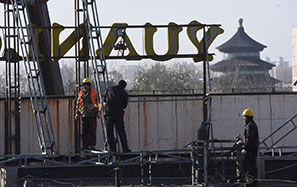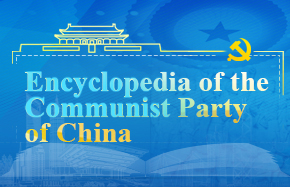US, China push climate change onto front burner
When the United States and China committed to specific targets for reducing greenhouse-gas emissions earlier this month, the agreement advanced the issue of climate change around the world, according to two observers.
"The targets are meaningful and significant," said Joanna Lewis, associate professor in the science, technology and international affairs program at Georgetown University in Washington.
"This is a monumental announcement that stabilizes the politics of climate change," said Alex Wang, assistant professor at the University of California at Los Angeles School of Law.
Lewis and Wang participated in a seminar Tuesday hosted by the National Committee on US-China Relations in New York on the US-China agreement announced during the Asia-Pacific Economic Cooperation (APEC) meeting in Beijing last month.
In a surprise announcement at APEC, US President Barack Obama and Chinese President Xi Jinping released targets for cutting greenhouse-gas emissions. Under the proposals, Chinese emissions of carbon dioxide would peak by around 2030, while the US would cut emissions by more than a quarter between 2005 and 2025.
Xie Zhenhua, vice-chairman of the National Development and Reform Commission, said China is confident of meeting its 2030 goals for a peak in carbon dioxide emissions and lifting its share of non-fossil fuel to around 20 percent of total energy use. He said that China will make the goals legally binding by incorporating them into the next three Five-Year Plans.
The US-China agreement is considered a major breakthrough on two fronts: diplomacy and environmental activism.
"It has certainly elevated climate and energy in the bilateral relationship," said Lewis. "It's interesting to see how the US-China relationship has evolved through the Obama administration, especially in regard to climate change."
"It has elevated an environmental issue to the top, and I think sets the stage for the possibility of a breakthrough at the meeting in Peru next week," said Wang. He was referring to a United Nations climate conference scheduled in Lima from Dec 1-12. It is intended to help produce a global deal on reducing carbon emissions to be agreed on next year in Paris.
Advances in exploration and drilling have produced the shale oil and gas boom in the US, a main reason for the steep drop in global crude oil prices this year. Wang said it's unlikely that development of shale deposits in China will be on the same level as those in the US. "There are technology barriers to getting the gas out of the ground in China that are more challenging than those in the US," he said.
Lewis said the emissions agreement involving two economic heavyweights like China and the US may provide a real economic incentive for green energy, which should provide a boost to the renewable energy sector.
"With China and the US seeking to lower emissions, it will be much easier to see the economic potential of increasing investment in clean energy," she said.
According to The Global Status Report, which wasreleasedearlier this year by the Renewable Energy Policy Network for the 21st Century, China led the rest of the world in renewable energy investment in 2013, spending $56.3 billion on wind, solar and other renewable projects.
Wang said the agreement also may produce more interest in market-based tools to lower emissions. "The use of market tools like a carbon tax will probably be essential in helping each country meets its target," he said.
A carbon tax is a specific price the government charges for carbon content per ton in fuels. That, however, may prove problematic in the US.
Results of a poll conducted by researchers at the University of Michigan's Center for Local, State and Urban Policy, and Muhlenberg College's Institute of Public Opinion released this summer and published in USA Today, showed that only a third, or 34 percent, supported taxing fuels such as oil, coal and natural gas.
Contact the writers at paulwelitzkin@chinadailyusa.com and lanlan@chinadaily.com.cn
























